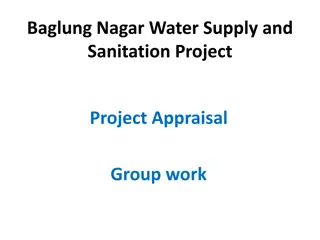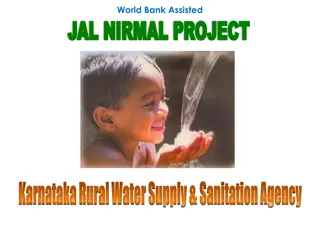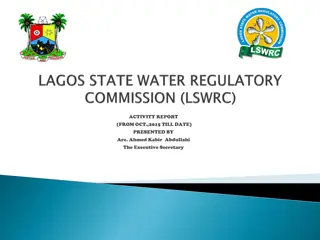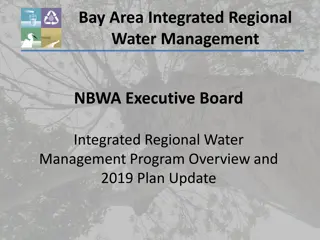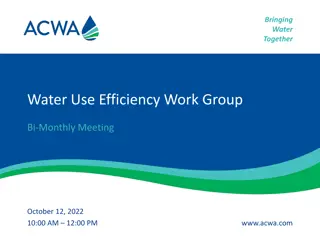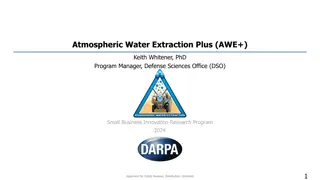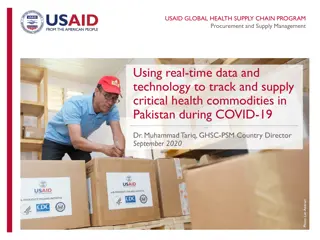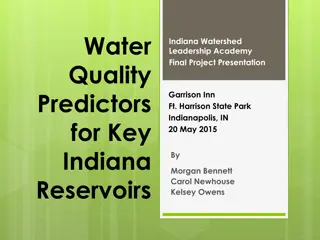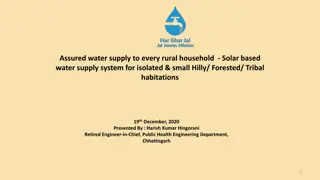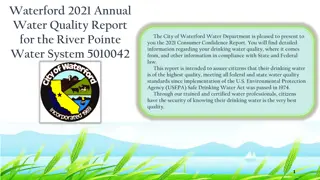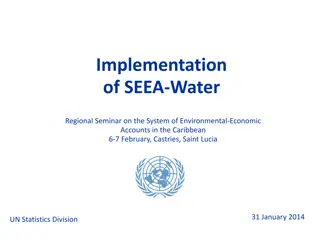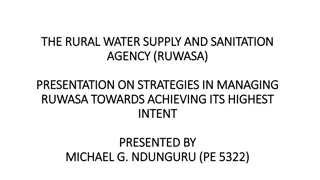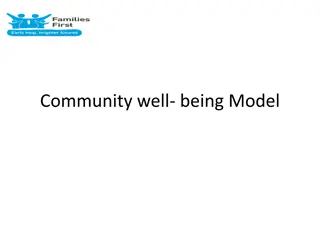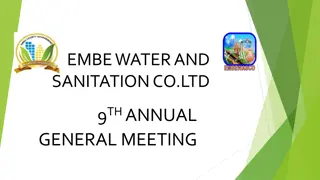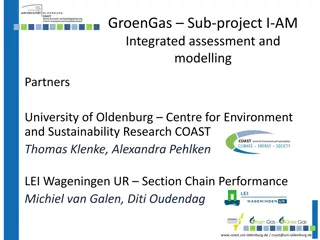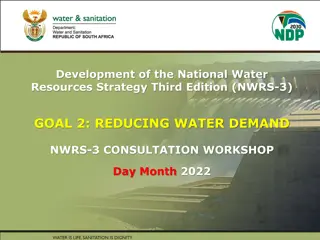Understanding Water Supply and Health for Community Well-Being
Explore the vital connection between water supply and health, emphasizing the importance of accessible, clean, and safe water for maintaining public health. Covering topics such as water quality, standards, sources, pollution, and related diseases, this comprehensive overview underscores the significance of water in achieving primary health care goals.
Download Presentation

Please find below an Image/Link to download the presentation.
The content on the website is provided AS IS for your information and personal use only. It may not be sold, licensed, or shared on other websites without obtaining consent from the author. Download presentation by click this link. If you encounter any issues during the download, it is possible that the publisher has removed the file from their server.
E N D
Presentation Transcript
WATER SUPPLY AND HEALTH OLUWADARE,T DEPARTMENT OF COMMUNITY MEDICINE
Water supply and health Water supply Adequacy/requirement and sufficiency Quality- criteria and standard Uses Water distribution Sources of water Water pollution Water related diseases: burden Surveillance of drinking water quality Role of water in achieving HFA
Introduction Overview of water supply and health Water should be easily accessible, adequate in quantity, free from contamination, safe and readily available all year round.
Introduction contd. Overview of water supply and health There can be no state of positive health and well-being without safe water. UNGA International drinking Water Supply and Sanitation Decade(1981-1990) 34thWorld Health Assembly Emphasized that safe drinking water is a basic element of Primary Health Care
Water supply Safe and wholesome water must be Free from pathogenic agents Free from harmful chemical substances Pleasant to taste Usable for domestic purpose
Water supply contd. Water quality: Criteria and standards These standards are exposure limits for bacteriological, viral, chemical and physical agents that have been adopted by governments or appropriate authorities and therefore have legal force.
Water supply contd. Water quality: Criteria and standards contd. The guidelines for drinking water quality recommended by WHO relate to following Acceptability aspects Microbiological aspects Chemical aspects Radiological aspects
Water supply contd. Water quality: Criteria and standards contd. Acceptability aspects Physical parameters Inorganic constituents
Water supply contd. Water quality: Criteria and standards contd. Microbiological aspects Bacteriological indicators Virological aspects Biological aspects
Water supply contd. Water requirement Physiologic requirement for drinking water have been estimated at about 2litres/head/day Consumption depends upon Climate conditions Standard of living Habit of people A supply of 150-200Ls per capital is adequate for all urban domestic purposes.
Water supply contd. Water sufficiency/inadequacy World wide around 1.1 billion people lack access to improved water sources Students are to discuss this slide What are the causes of inadequate water supply in Nigeria? What are the effects of inadequate water supply in Nigeria? Solutions to water inadequacy in Nigeria.
Sources of water supply Water sources must conform to two criteria The quantity must be sufficient to meet present and future requirement The quality must be acceptable Sources include Rain Surface water Impounding reservoirs Rivers and streams Tanks, ponds and lakes Ground water Wells Spring
Uses of water Domestic use Public purposes Industrial purposes Agricultural purposes Power production from hydropower and steam power Carrying away waste
Water pollution Pure uncontaminated water does not occur in nature Sources of impurities are Natural Man-made Sewage Agricultural pollutants Industrial waste Physical pollutants
Water pollution contd. Indicators of pollution include Amount of total suspended solids Biochemical Oxygen Demand (BOD) at 20 degree C Concentration of chlorine, Nitrogen, Phosphorus and absence of dissolved oxygen
Water related diseases Water related diseases are broadly classified into Water borne diseases Water washed diseases Water based diseases Water related insect-vector diseases
Water related diseases contd. Water borne diseases They are caused by ingestion of water contaminated by human or faeces or urine, which contain pathogenic microorganisms. They can be classified into Diarrhoeal water-borne diseases Non-diarrhoeal water-borne diseases
Water related diseases contd. Water borne diseases Diarrhoeal water-borne diseases Cholera Shigellosis Amoebiasis campylobacteriosis
Water related diseases contd. Water borne diseases Non-diarrhoeal water borne diseases Typhoid fever (17 million deaths each year) Hepatitis A (1.5 million deaths each year) and E Polio Legionellosis Leptospirosis
Water related diseases contd. Water washed diseases They are caused by poor personal hygiene, skin and eye contact with contaminated water. They are also called water scarce diseases Trachoma Scabies Ringworm Louse borne epidemic typhus
Water related diseases contd. Water related insect-vector diseases They are caused by insects that breed of feed in or near water bodies. Malaria Onchocerciasis Yellow fever Dengue fever Zika virus disease
Surveillance of drinking water quality Activities included in surveillance functions are: Approval of new sources Watershed protection Approval of the construction and operating procedures of waterworks Sanitary surveys
Surveillance of drinking water quality contd. Activities included in surveillance functions are: Monitoring programme, including provision for central and regional analytical laboratory services. Development of codes of practice for well construction, pump installation and plumbing Inspection quality control of bottled-water and ice manufacturing operations.
Surveillance of drinking water quality contd. Elements of a surveillance programme are: Sanitary survey Sampling Bacteriological surveillance Presumptive coliform test Detection of faecal streptococci and CI. Perfringens Colony count Biological examination Chemical surveillance
Assignment Disadvantages of the different sources of water. What are the characteristics of sanitary well?






